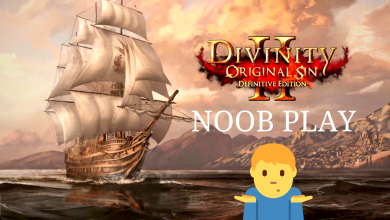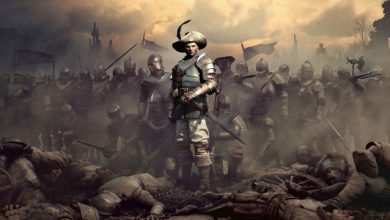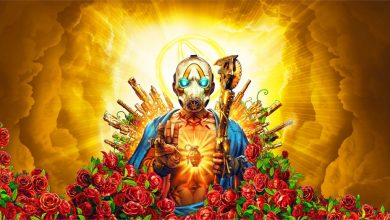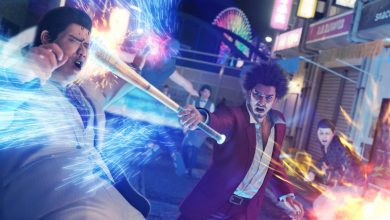![]() Final Fantasy XIII is the thirteenth iteration in the long running successful role playing franchise that has delighted millions of fans worldwide. For those of you new to Final Fantasy, the games consist of a few defining characteristics; a band of adventurers thrown together by chance, out to save the world from an unknown horrible fate orchestrated by a near omnipotent being in fantastic locations. While the story is usually heavily scripted, the role-playing element comes from the many classes available, lots of weapons and accessories to play around with, and complex battle systems that offer a lot of flexibility for those who possess an advanced mathematics degree. Plus there’s the engaging characters, the outstanding music, and groundbreaking graphics, all wrapped up in an epic story. Now that you’ve got a primer for the series, let’s start with number thirteen.
Final Fantasy XIII is the thirteenth iteration in the long running successful role playing franchise that has delighted millions of fans worldwide. For those of you new to Final Fantasy, the games consist of a few defining characteristics; a band of adventurers thrown together by chance, out to save the world from an unknown horrible fate orchestrated by a near omnipotent being in fantastic locations. While the story is usually heavily scripted, the role-playing element comes from the many classes available, lots of weapons and accessories to play around with, and complex battle systems that offer a lot of flexibility for those who possess an advanced mathematics degree. Plus there’s the engaging characters, the outstanding music, and groundbreaking graphics, all wrapped up in an epic story. Now that you’ve got a primer for the series, let’s start with number thirteen.
[singlepic id=1962 w=450 float=center]
Final Fantasy XIII is about a group of adventurers who have been unwillingly stuck with a quest to save the world that has been torn in two. Since subtle imagery has never been a strong point of the series, the downtrodden are literally underground, and the protected elite society is above ground, and the powers that be fly around in great airships high above terra firma. The story itself takes a long time to take off, and somehow never reaches epic proportions. It’s hampered by some questionable pacing; the first half of the game being a lengthy tutorial, which takes its time to explore the story and the characters. The game gives complete freedom of party management only when the characters need to do a ridiculous amount of grinding to face the final chapter.
The second half of the game allows more freedom to actually explore the world and get their teeth into role playing. Yet the story progression comes to a complete halt. There’s also a lot of confusing words like l’Cie, fal’Cie, C’ieth, but they are as important to the game as the rest of the story, which is to say not at all. The good part is that there’s a comprehensive data log, which gives all the information about the story, characters, events, and places. The bad part is that in a game that boasts some of the best cinematics, the story can be understood by reading the text. There is a point in the game where the story is literally told in five sentences by your team mate as a side conversation. Not the best example of storytelling.
[singlepic id=1959 w=450 float=center]
The characters are a motley crew and while there are a few whom you would wish to throttle constantly, there’s no one as charismatic as Cloud, Squall or the recent Balthier. It’s a shame since the series is famous for engaging characters. The main protagonist, Lightning, on a quest to save her sister and the world, is blatantly modelled on fan favourite Cloud. Helping her from the beginning is the most likeable of the crew – Sazh. Even the Chocobo chick living in his hair is not as weird as it sounds. Worse is Hope. It seems the writer made use of every teenage cliché to write his dialogue. Then there’s Vanille. She’s supposed to be esoteric, but comes across as a selfish nutcase, who would be more at home in Dead or Alive Paradise. The antagonists fare worse, if that’s possible. They are completely devoid of character and once the cutscenes containing them are over, they are instantly relegated to the darkest corners of your mind. The characters get some generic dialogue which does not help the story, but the voice acting is pretty decent. Even the lip synching with the English dialogue is good.
The game looks fabulous. Square Enix promised us a visual spectacle in the definitive RPG for this generation, and while they fell short of expectations in the second part, they delivered in spades with the first. The game is a visual delight, from the elegant menus, to the gorgeous worlds, to jaw dropping cinematics. There’s little difference in the visual quality between the gameplay and the cutscenes, and the battle transition is smooth. The attention to detail is evident; Lightning’s sword bouncing on her legs, Fang’s pelt flowing on her sari, the light stubble on Snow, Sazh’s afro moving slightly. I have yet to see a game in this console generation which looks so beautiful.
[singlepic id=1958 w=450 float=center]
The mixes of vibrant colours, titanic architecture, and detailed environments make this a wonder to look at. There were times when I would just stop and move the camera around to take in the environment, or gaze in wonder at the enemies. If there’s one reason to play the game, it would be the visuals. Music always plays an important role in Final Fantasy games, and this one is no exception. Masashi Hamauzu uses a mix of styles to set the appropriate mood during the events.
Another reason to play the game is the battle system. Final Fantasy XIII employs Active Time Battle, a turn based battle system, which allocates turns based on how long actions take to perform. It’s a neat little mix of real-time and turn based, which the series has been known for. The new twist this time is the introduction of Paradigms, which are combinations of roles assigned to each character in the party. When a character is assigned a role, he can only carry out the actions learned by the role. For example, a medic can only heal, and a ravager can only do magic damage. There are six roles each character can learn, and for optimum gameplay, it is important that each character masters more than one.
Next page: IVG Verdict



